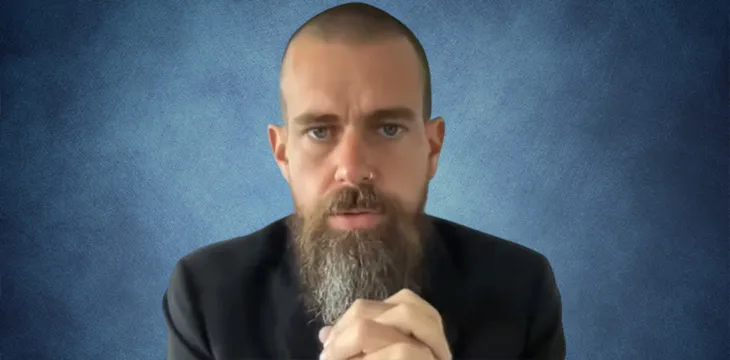|
Getting your Trinity Audio player ready...
|
Here’s a delicious bit of irony: Jack Dorsey’s Block (NASDAQ: SQ)—which is the founding member of Crypto Open Patent Alliance (COPA), an organisation which seems to exist only to call Dr. Craig Wright a fraud—has been forced to cite one of Dr. Wright’s foundational blockchain patents in one of their own recently-approved smart contract patents.
That patent—Registry and Automated Management Method for Blockchain-Enforced Smart Contracts’—is held by nChain and lists Dr. Wright as its inventor. Thanks only to an intervention by the patent examiner in charge of reviewing Block’s application, Dr. Wright’s patent will now be listed permanently as a citation on Block’s recently granted patent, which covers ‘Conditions for Blockchain-Enforced Contracts.’
That’s awkward for Block, because COPA’s multi-year lawsuit against Dr. Wright is predicated on the idea that Dr. Wright has nothing to do with blockchain’s invention at all. As they told the English High Court in a recent filing in that case, “Wright’s entire narrative must be tested: in one way this dispute only relates to whether he is or is not the author of the Bitcoin White Paper, but COPA’s case is that his entire conduct shows that he is not.”
The U.S. Patent and Trademark Office (USPTO) obviously disagrees.
Patent applications are supposed to cite any prior works (often referred to as ‘prior art’) that the patent builds upon: from the point of view of the applicant, this makes it clear to the patent examiner reviewing the application that they have considered (and excluded) the possibility that the newer patent is not covered by an earlier patent.
From the USPTO’s Manual of Patent Examining Procedure:
“The basic purpose for citing prior art in patent files is to inform the patent owner and the public in general that such patents or printed publications are in existence and should be considered when evaluating the validity of the patent claims. The basic purpose for citing written claim scope statements is to ensure that the patent owner takes consistent positions regarding the scope of the claims of a particular patent in the courts and the before the Office. Placement in the patent file also ensures consideration thereof during any subsequent reissue.”
In this case, Block didn’t cite Dr. Wright’s prior patent at all. The fact that Block’s patent was standing on the shoulders of Dr. Wright was picked up by the USPTO’s patent examiner, who added the citation before approving the patent following significant back and forth between Block and the examiner.
The irony here is that Block—the lead company of an association dedicated to blockchain and denying the intellectual property of others—is filing its own patents. It is rather poetic then that COPA has been forced to add one of Dr. Wright and nChain’s patents on one of their own: for a company that is spending so much effort trying to paint Dr. Wright as a fraud, having his name stamped on their own blockchain-related patent is the kind of symbolic victory money can’t buy.
And let’s not forget what COPA actually is: the Crypto Open Patent Alliance is a consortium of tech and digital asset companies. It bills itself as a patent alliance—basically, all the members agree that enforcing intellectual property rights via patents is a bad thing, while committing to never using their own patents other than defensively. This patent filing is really about Block trying not to pay licensing while crushing competition as the monopoly incumbent in Silicon Valley. It’s worth noting that Block’s patent filing predates COPA, and they organized COPA only when they learned of Dr. Wright’s patent holdings and the licensing implications—demonstrating their anti-competitive and monopolistic behavior.
However, the only thing COPA has done to date is launch costly litigation against Dr. Craig Wright in an effort to get the English High Court to declare that he is not the author of the Bitcoin white paper—despite the High Court already confirming Dr. Wright’s authorship.
From COPA’s point of view, Dr. Wright is an obvious target: he has been building an enormous reservoir of patents since before Bitcoin was publicly released, and his work at nChain has been prolific enough that in 2021 alone, the company was fifth on the list of patents and pending patent applications in the world—hot on the heels of corporate gigatitans Tencent and Alibaba.
If COPA’s founding member is already taking these kinds of losses without any kind of direct involvement by Dr. Wright, what does that portend for COPA v Wright, set to go to trial in 2024? Stay tuned.
Follow CoinGeek’s Crypto Crime Cartel series, which delves into the stream of groups—from BitMEX to Binance, Bitcoin.com, Blockstream, ShapeShift, Coinbase, Ripple,
Ethereum, FTX and Tether—who have co-opted the digital asset revolution and turned the industry into a minefield for naïve (and even experienced) players in the market.

 08-17-2025
08-17-2025 





